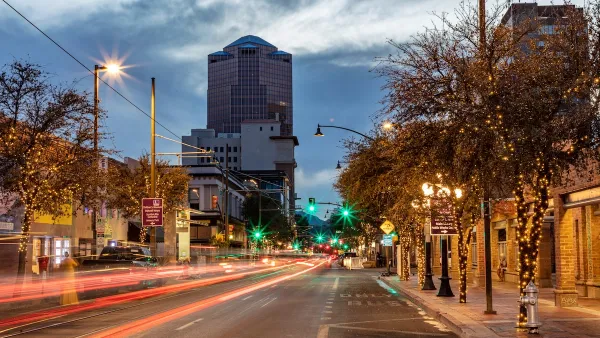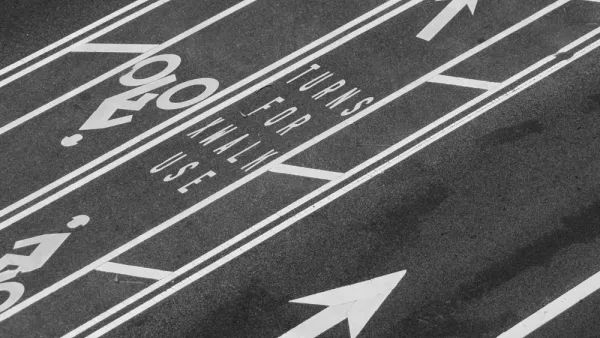The patterns of urban development over the past few decades have pushed more and more people into cars by necessity. But as design priorities change, so are people's walking and driving habits.
This piece from Sierra looks at how urban form is ushering changes in the way people move about cities, and other influences for getting people out of their cars.
"All that extra driving--people using a gallon of gas to get a gallon of milk--has turned us into high-octane petro-vores. Between 1960 and '70, the U.S. population grew by 13 percent while gasoline demand rose by 54 percent; the next decade, with the same population growth, gas demand increased by 17 percent.
The shift to sprawling development patterns and the turning away from once-common practices like walking to school are often defended as a matter of "choice"--one, of course, fueled by decades of government laws and incentives. The irony is that many communities today have no choice when it comes to transportation: We have created a vehicular monoculture. But there are signs that this is changing. First, we seem to be maxing out on just how much driving we're willing to do."
FULL STORY: Living Large Driving Less

National Parks Layoffs Will Cause Communities to Lose Billions
Thousands of essential park workers were laid off this week, just before the busy spring break season.

Retro-silient?: America’s First “Eco-burb,” The Woodlands Turns 50
A master-planned community north of Houston offers lessons on green infrastructure and resilient design, but falls short of its founder’s lofty affordability and walkability goals.

Delivering for America Plan Will Downgrade Mail Service in at Least 49.5 Percent of Zip Codes
Republican and Democrat lawmakers criticize the plan for its disproportionate negative impact on rural communities.

Test News Post 1
This is a summary

Test News Headline 46
Test for the image on the front page.

Balancing Bombs and Butterflies: How the National Guard Protects a Rare Species
The National Guard at Fort Indiantown Gap uses GIS technology and land management strategies to balance military training with conservation efforts, ensuring the survival of the rare eastern regal fritillary butterfly.
Urban Design for Planners 1: Software Tools
This six-course series explores essential urban design concepts using open source software and equips planners with the tools they need to participate fully in the urban design process.
Planning for Universal Design
Learn the tools for implementing Universal Design in planning regulations.
EMC Planning Group, Inc.
Planetizen
Planetizen
Mpact (formerly Rail~Volution)
Great Falls Development Authority, Inc.
HUDs Office of Policy Development and Research
NYU Wagner Graduate School of Public Service





























